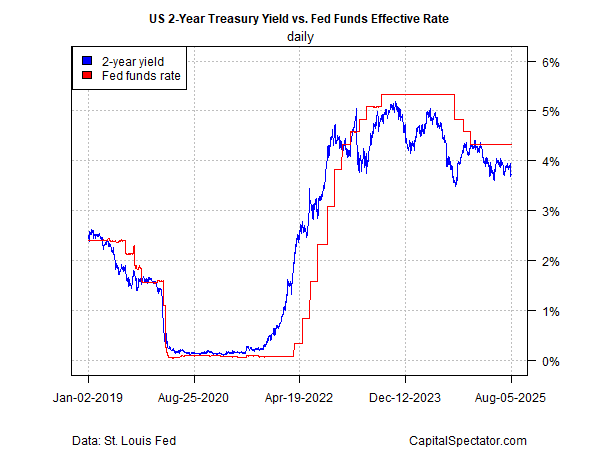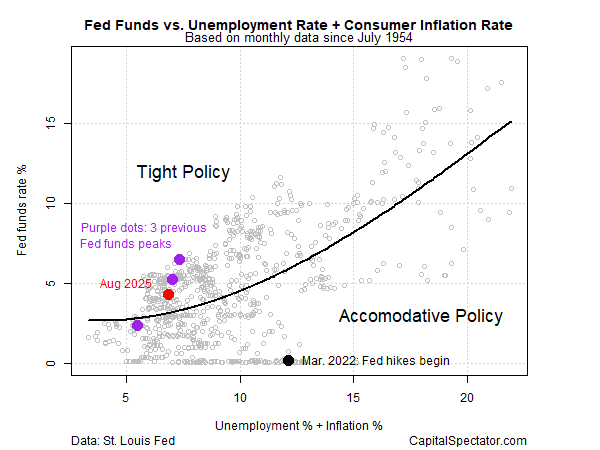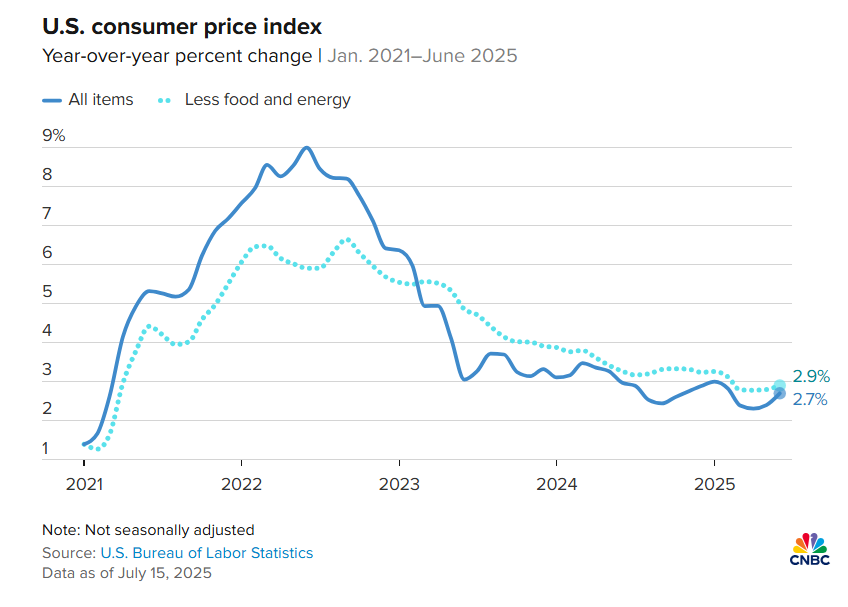Adaptimmune stock plunges after announcing Nasdaq delisting plans
Markets are all in on predicting that the Federal Reserve will cut interest rates at the next policy meeting on Sep. 17. But there could be a wild card in the deck. A key macro question between now and then: Will the next two updates on consumer inflation persuade the Fed to leave rates unchanged – or perhaps raise rates?
At the moment, markets are confident that the central bank will ease policy next month. Let’s start with the US 2-year yield, which is widely viewed as a proxy for rate expectations. The current yield – 3.72% as of Aug. 5 — continues to trade well below the median Fed funds rate (4.33%), a sign that market sentiment is pricing in policy easing in the near term.

The case for easing also looks compelling based on a simple model that compares the median Fed funds target rate against the sum of the unemployment rate and the year-over-year change in headline consumer inflation – a proxy benchmark for the Fed’s dual mandate focus of minimizing inflation and maximizing employment. According to this view, policy remains moderately tight, which implies that easing is prudent.
No surprise, then, that the Fed funds futures market is pricing in an implied 87% probability that the central bank will cut next month.
The wild card is tariff-related inflation, and the related question: Will it show up in the next two updates for the consumer price index (CPI) that are scheduled ahead of the Fed’s Sep. 17 policy announcement?
Many economists advise that the tariffs will lift inflation, if only temporarily. The June CPI report suggested as much, albeit only on the margins. The year-over-year change picked up for a second month, rising to 2.7%, the highest since February and putting more distance over the Fed’s 2% inflation target.

Beth Hammack, president and CEO of the Federal Reserve Bank of Cleveland, this week said that inflation could pick up this year as businesses start to pass on the cost of higher tariffs to consumers through price hikes. Speaking with CBS News, she advised:
“Individual businesses have been trying to hold back on, passing on those [tariff] costs, because they’re worried about what it might mean for demand. They’ve been selling inventory that they’d accumulated early in the year, and so they didn’t need to charge for the tariffs on that, but they’re coming through those stockpiles.”
Greg Daco, chief economist at EY-Parthenon, agrees.
“Tariffs are starting to bite,” he told Yahoo Finance earlier this week. “They’re leading to higher inflationary pressures, which are curtailing consumer spending and prompting businesses to adopt more of a wait-and-see approach.”
Yet as The Wall Street Journal points out:
“US tariffs are higher than they have been in decades. Their effects have been mild.”
Deciding if inflation is a genuine threat, or not, will weigh on investor sentiment ahead of next week’s CPI data for July. A subsequent round of CPI numbers via the August data will arrive just days ahead of the Fed meeting on Sep. 17.
Meantime, a wait-and-see dynamic prevails. Come September, however, the Fed will be under pressure to declare itself, one way or another, on its stance vis-à-vis tariff inflation.
The jig is up, suggests San Francisco Fed President Mary Daly. In an interview with Reuters she explained:
“I was willing to wait another cycle, but I can’t wait forever,” a reference to the Fed’s latest decision to leave rates unchanged. “We of course could do fewer than two (rate cuts) if inflation picks up and spills over or if the labor market springs back,” Daly said. “I think the more likely thing is that we might have to do more than two… we also should be prepared in my judgment to do more if the labor market looks to be entering that period of weakness and we still haven’t seen spillovers to inflation.”
